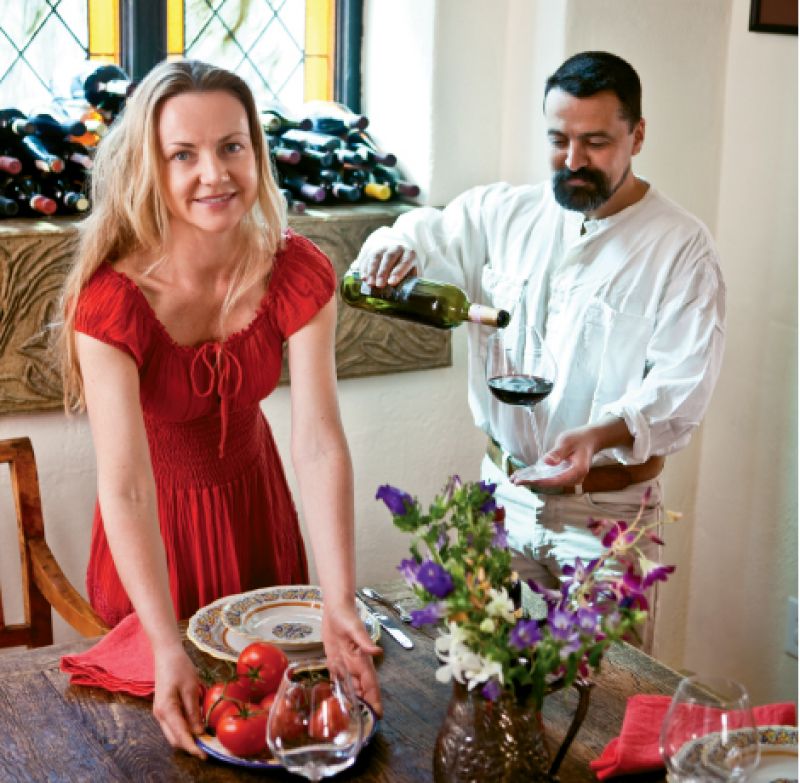
Traveling by table to central Italy with chef Massimiliano Sarrocchi and his wife, Natasha
The sun dips across the Sant’ Antimo valley, spilling warm light across vineyards and olive groves. Having returned to their farmhouse villa from a tour of Florence, the Montalcino marketplace, or another delicious day trip, the jovial diners congregate around an alfresco table, sharing wine and accounts of afternoon adventures. Glasses are raised in a toast to their newfound camaraderie and to the aromatic meal that their chef and guide has just delivered. “Salute e cent’anni! Health and 100 years!” Tradition holds an honorary seat at tonight’s supper table.
Since 2001, Charleston restaurateur Massimiliano Sarrocchi and his wife, Natasha, have escorted small groups on culinary tours of his native Italy. Limiting the eight-day trips to 10 to 12 travelers, this cordial couple serves up intimate journeys into the flavors, sights, history, and true personality of the Tuscan region, from unique encounters with artisan bakers and cheesemakers to impromptu wine tastings in underground cellars. This spring, Massi, as most call him, sold his Warren Street trattoria, Pane e Vino, in order to expand the offerings at their tour company, Italy Discovered. For a taste of their travels, we asked the Sarrocchis to prepare a typical Tuscan summer meal using simple, in-season ingredients.